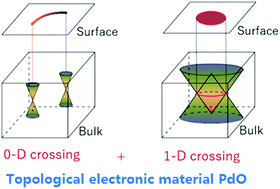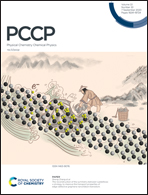Palladium oxide: an excellent topological electronic material with 0-D and 1-D band crossings and definite nontrivial surface states
Abstract
Because of their promising applications in electronics, topological materials have been much investigated recently. Here, we propose that palladium oxide (PdO) is an excellent topological semimetal with 0-D and 1-D band crossings and definite nontrivial surface states. The 0-D band crossing produces a pair of triply degenerate nodal points, and the 1-D band crossings form two nodal loops in PdO. After spin–orbit coupling (SOC) is included, the triply degenerate nodal points transform into Dirac points, and the nodal loops open small gaps. The SOC gaps at the nodal loops are comparable or lower than those of typical nodal loop materials. These results suggest that PdO can naturally host multiple fermions. Remarkably, all the fermions in PdO manifest definite nontrivial surface states, whereas triply degenerate nodal points and Dirac fermions show Fermi arc surface states, and the nodal loop fermion shows drumhead surface states. The topological band structure for the fermions and their nontrivial surface states are quite promising to be detected in future experiments.



 Please wait while we load your content...
Please wait while we load your content...